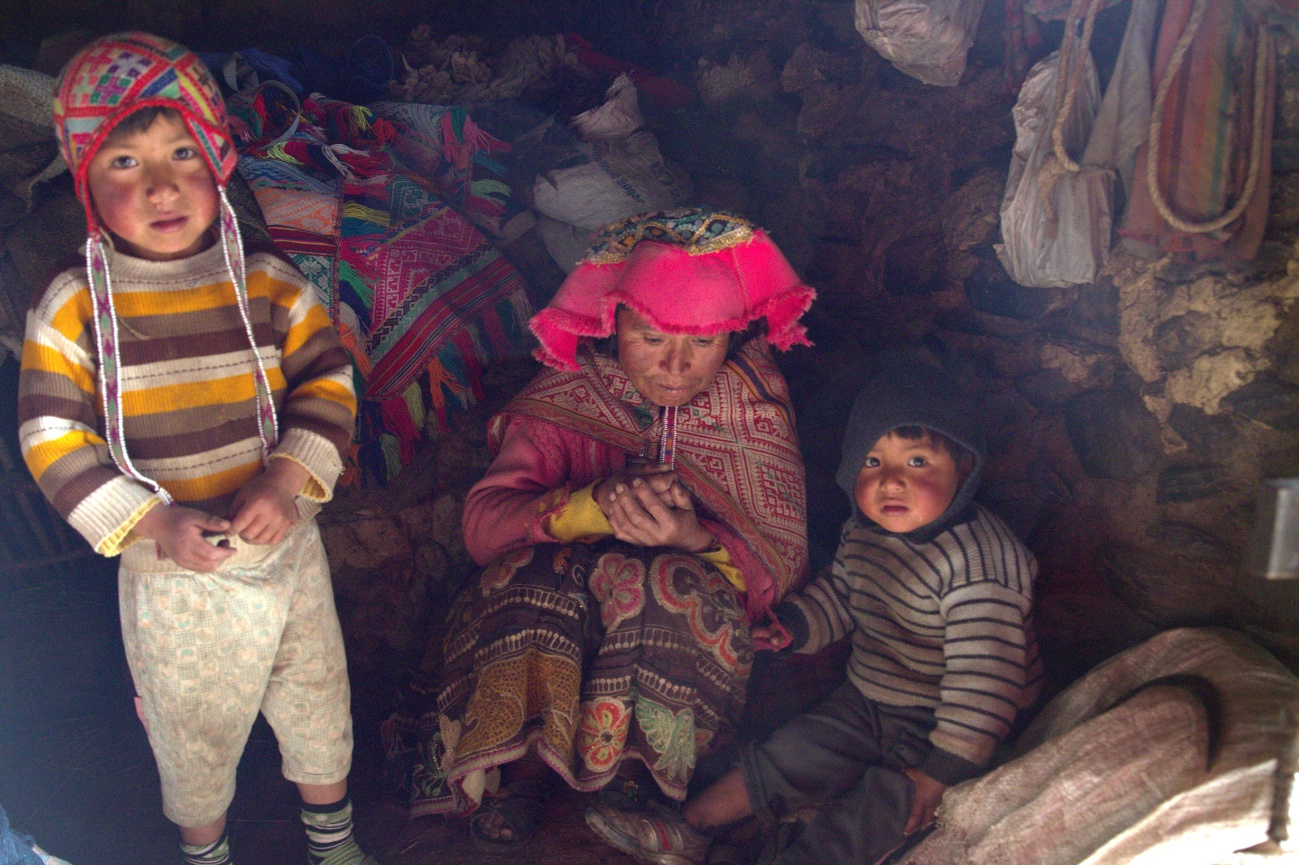
At 5:30 in the morning, Sandra McGirr, a Canadian nurse and co-‐founder of DESEA Peru and Vilma Florez Huayllapuma, a Peruvian nurse who grew up in the Sacred Valley of the Incas, pulled up in an old pickup truck with a cracked windshield. We would be spending the day driving to tiny communities high up in the Andes so that Sandra and Vilma could visit families, check on their health and monitor the water filtering systems that DESEA installed. DESEA is a small NGO that focuses on the health of women and families in the Sacred Valley.
We stop in the small city of Calca, with its bustling market activity including dozens of types of potatoes for sale, to buy dozens of sweet cakes that will be used for Christmas treats for children living high up in the mountains. The area had just experienced a two-‐day strike so the activity was even higher than normal.
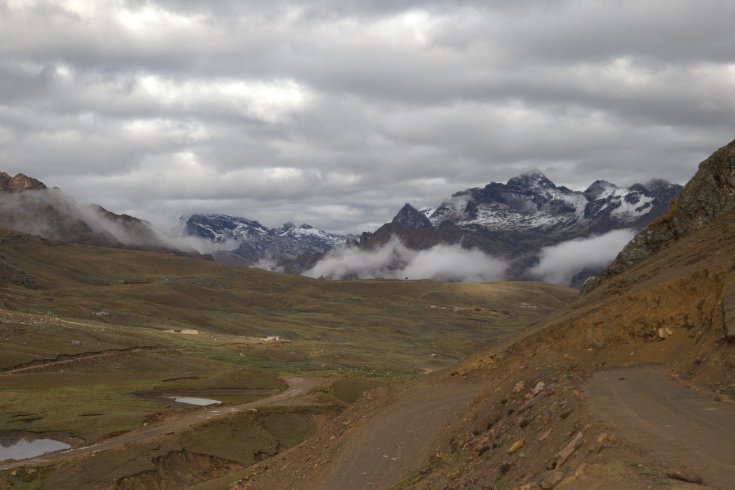
We were traveling to a remote area, high up in the Andes. After a half hour on paved roads from Calca, we veered off sharply and continued on dirt roads for more than two hours, to an altitude of nearly 14,000 feet. Winding along steep, cloudy mountain roads, we passed ancient Incan ruins and small mountain lakes. In one of the highest inhabited regions in the world, llamas wandered through the fields, along with alpacas, sheep, horses, chickens and dogs.
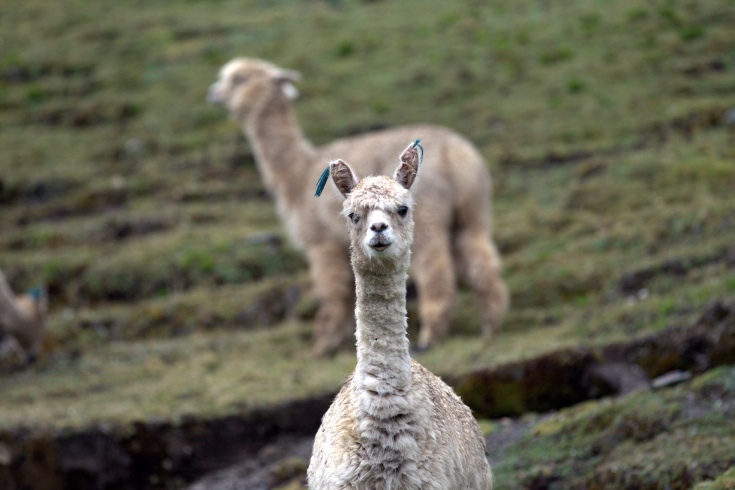
The people that live in these communities are subsistence farmers, whose primary crops are various kinds of potatoes. Sometimes they supplement their income from the wool of their alpacas, sheep or llamas. And sometimes the men travel to other places for informal employment, such as being porters on the Inca trail. Many of the boys could be seen working in the fields—although they did take some time off to play with toy airplanes or to run with their dogs.
This year has been a difficult one for the local residents as it has been very dry. As one community leader noted to the Inter Press Service News Agency, “Pachamama [mother earth, in Quechua] is nervous about what we are doing to her.”

Most of the adults you will see here are women, many with many young children, the youngest of whom were carried in a k’eperina, a large, colorful rectangular scarf. All of the women wore monteras, the hats of the Andean community. The type of hats varies from community to community. In Pisac, many of the women wore ones that looked like men’s bowlers; in this community, they were multi-‐sided kerchiefs in red, yellow and orange. The boys wore knitted caps with embroidered straps that they let hang loose.
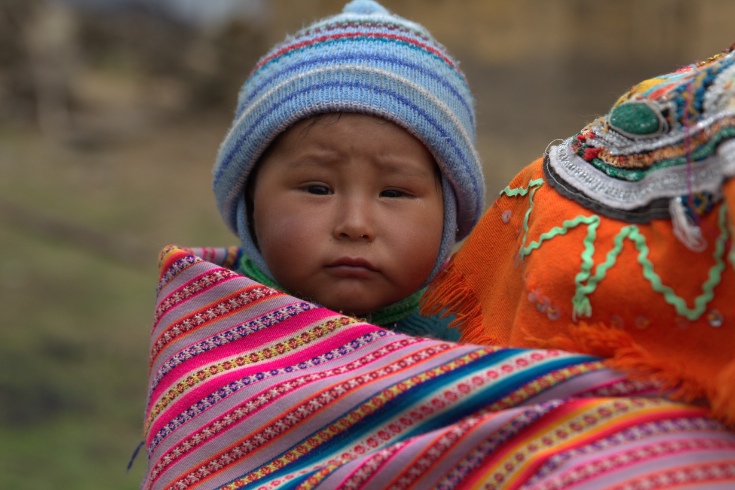
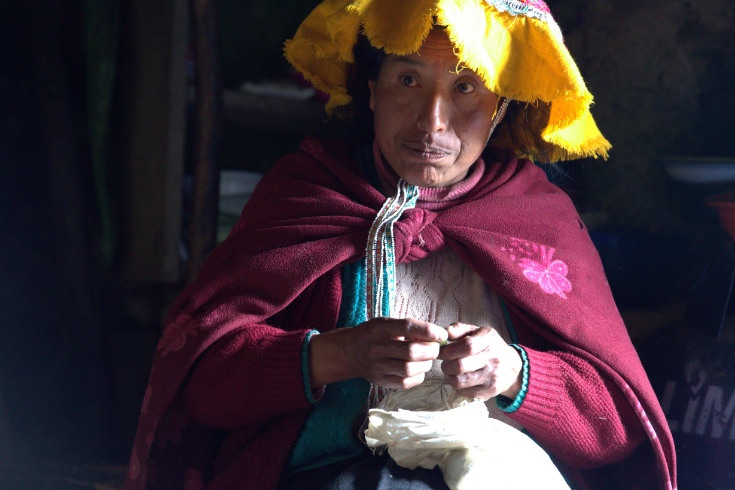
The gorgeous landscape and the beautiful colors of the embroidered clothes belie the desperate poverty. The houses are simple-perhaps 40 square meters with irregular dirt floors, no running water, no electricity, no toilets. They heat and cook by small indoor stoves, without adequate ventilation. The roofs are either thatched or made of corrugated tin. Even during the bright sun of the day, they are dark unless the owner has been able to afford a $9 piece of plexiglass to put into the roof.

One of DESEA Peru's main activities is the installation of simple water filters in people’s homes. Rather than simply install the devices and leave them be, these nurses and qhalis (community health workers), DESEA uses monitoring of the filter systems as a way to carry out direct community health work. The name quali is indicative of their role as Qhali means healthy in Quechua. The visits also give DESEA Peru the opportunity to make inroads in training local women in how to improve the health of those in their communities. They partner with other NGOs, such as Vitamin Angels, to carry their work even further. Prior to the installation of the filters and the education campaign, three people of 1000 would die from preventable illnesses each year. Through the use of the filters and monitoring, that figure has been brought down to zero.

The system that they use for water treatment is a biosand filter based on the model developed by the Center for Affordable Water and Sanitation Technology (CAWST) based in Calgary. Sandra’s husband, Sandy Hart, is a hydrologist who was able to change the system from one that relied on concrete molds and weighed more than 200 pounds—something that was virtually impossible to carry at this altitude—to one that relies on PVC pipes. The new system weighs less than 20 pounds and can be built for about $55.

The organization pays for the cost of the materials; the family utilizes its own labor to prepare, transport and maintain it. In exchange, they allow DESEA to periodically visit the home and inspect the system. CAWST notes that the filter removes up to 100 percent of worms and protozoa, nearly all of the bacteria and between 70 and 90 percent of the viruses. Sandra’s own experience is that it has eliminated virtually all of the fatalities caused by impure water that the communities had experienced.
Training local women as community health workers is another key element of DESEA Peru's mission. They watched and listened to the way people learned. Pamphlets and instruction manuals would not work, as most of the people that live here are not literate. Yet they are eager to learn, can calculate complicated math questions about their crops in their heads, and build strong, complex stone structures. So DESEA matched its teaching techniques to the way people learned. Some of this involved acting and role-‐playing; some involved lessons drawn through pictures. And all involved a deep level of respect for the community.
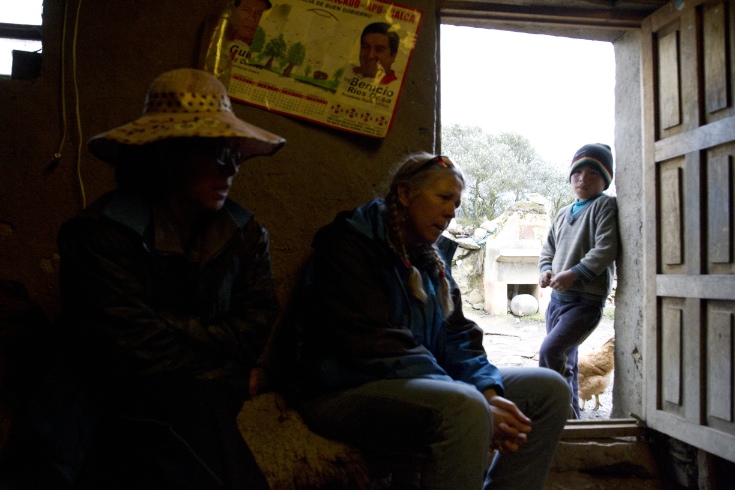
What is at least as important as the physical inspection is the dialogue that is created between the community and DESEA’s staff. It was clear that the nurses and the local health workers were trusted by the people living in these communities with the most private details of their lives. The filter was the point of entry, but the conversations took on much deeper, more intimate meanings. The women were very open with Sandra and Vilma about the key issues in their lives.
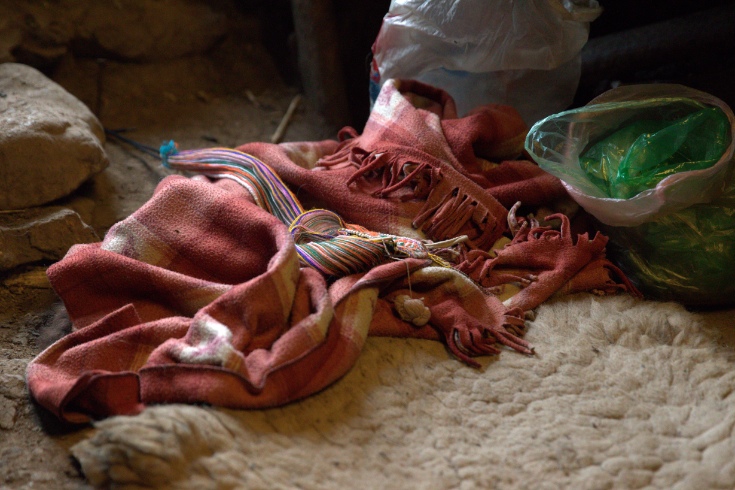
When we entered the one house, the light shone inside as if there were an electric light. Instead, it was from a $9 sheet of hard plastic that had been installed on the room. The glow from the light combined with the intricacy of the embroidery of a ribbon Ima was weaving for her hat gave the house a warm, orange glow.
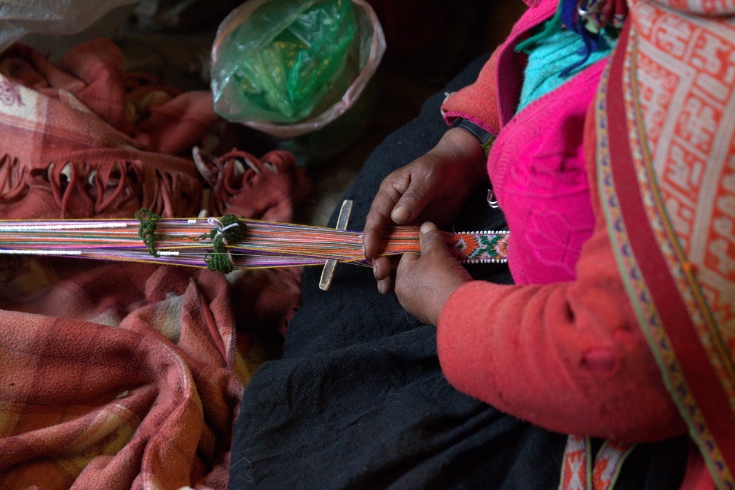
Ima was a widow and had also lost her only son. She had no money so she was staying with a cousin, who was also very poor, but who had a house. Unfortunately, the message the nurses had to deliver was not as warm. Two weeks before, Ima had walked four hours to a state run clinic only to be handed a piece of paper and told she needed an operation. No additional explanation was given and Ima could not read the paper. It was left to the nurses from DESEA, whom she trusted, to tell her that she had cancer. It was not necessarily fatal—stage two uterine cancer—but she would need an operation if she were to survive. (The names of the local residents have been changed.)

Outside the house stood Manay, a boy of about 12. He was listening to every word, but pretending not to listen. I asked him if this was his great aunt. He nodded and it was clear he was very close to her, akin to a grandson. We stood silent for a few minutes while he continued to listen, but pretended that he was not. I reached into my pocket and gave him an orange I had been carrying. He took it tentatively, then started to tear the skin—and then stopped and put it in his pocket. He would save it for later when he would share it with his family.
I asked him if he understood the conversation. He shook his head, but remained firmly planted to the spot from where he could hear everything. His face had a look of terror, but only partial recognition. I knew that look. I had lost my mother when I was only a few years older than he was. The whispers, the question marks, the fear of knowing that you knew something that you did not quite know, but did not want to admit any of that. Especially when he was listening to the sounds of tears coming from the house.
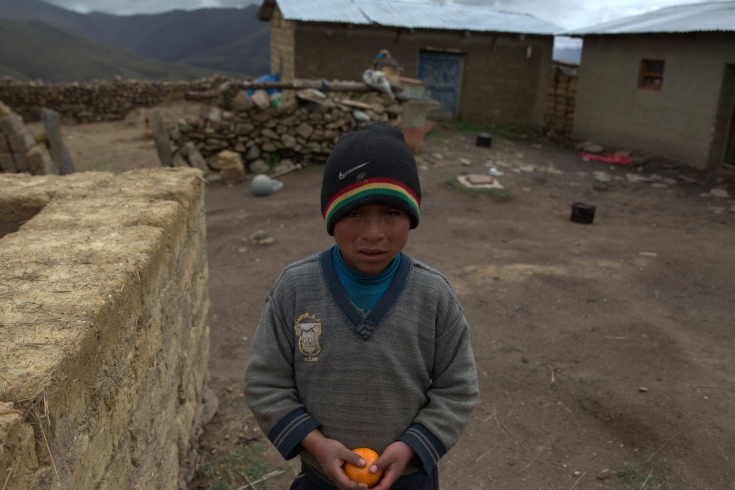
When the nurses left the house, we discussed the fact that Manay had heard the conversation. With great sensitivity, Vilma explained that his cousin was sick, but that they were going to help her to get an operation and get better. He seemed a little relieved, but on the verge of tears at the same time, but grateful that someone had talked with him.
Peru has a complicated mixture of public and private health care systems, including the comprehensive health system, Seguro Integral de Salud (SIS), which is targeted towards the very poor. Sandra and Vilma discussed the fact that even if on paper health care for the poor is free, the reality is very different. Ima would need money for the operation. They would find a way to raise the funds, and would also have someone make the appointment for Ima, accompany her to the visits, translate from Spanish to Quechua, and be her advocate.
This is the kind of human intensive work that DESEA Peru does. In communities as far from city centers as this was, and where the houses are spread apart so far, the outreach from DESEA’s staff could only touch a few people each day. By training local women in the filter system and in the rudimentary elements of health care, they could spread the wealth more broadly, and also create jobs. Yet DESEA Peru's strength is also its challenge. It is small and knows its communities intimately. But that size and local focus also creates barriers for it to be taken seriously by the donor community.

Here, high up in the Andes, what other option is there to reach these communities? Communities that are becoming smaller and smaller each generation as more young people move to urban areas in search of better, more stable employment. Without the active intervention of the DESEA workers, these families would remain untouched. By building the connections with the community, they have been able to improve the lives of the families that live there. In this case, not only has its work with the water filters and training improved people’s lives overall, their intervention in this case gave a woman with cancer a chance to live.
There is a sad epilogue to the story. Two weeks after our visit, Manay’s mother passed away suddenly. Sandra noted that this is reflective of the “harsh realities” in these communities. DESEA Peru is continuing to help get treatment for Ima, as well as assisting other families in the region. I came away with enormous respect for the work they do and for the dedication for improving the lives of people in these communities.
For more information on DESEA Peru: www.deseaperu.org, on Facebook at DESEAPeru, or on Twitter at @DESEAPeru.
If you are interested in receiving future blogs by Ira Peppercorn, please join the mailing list at Peppercornimages.com.


0 Comments